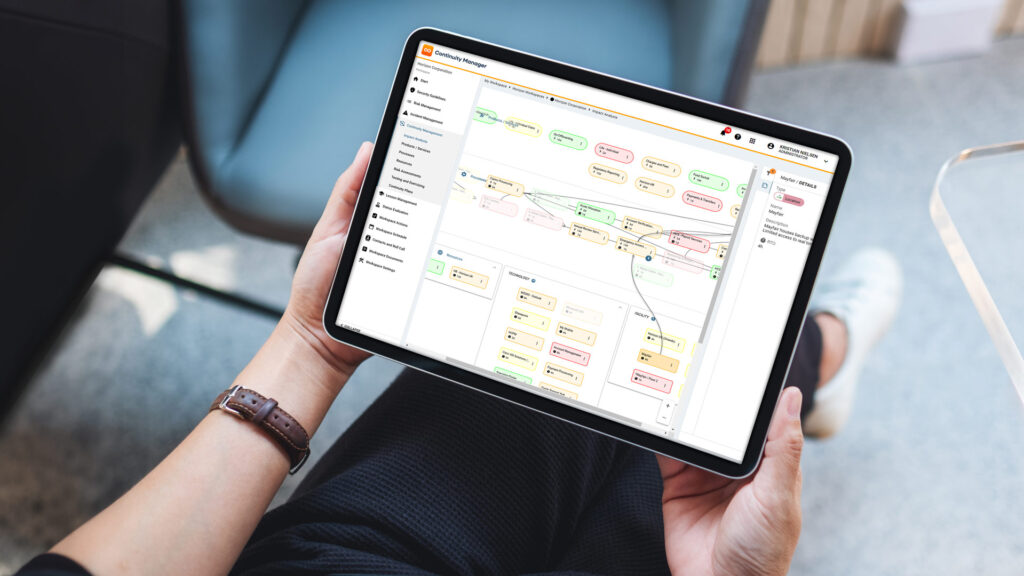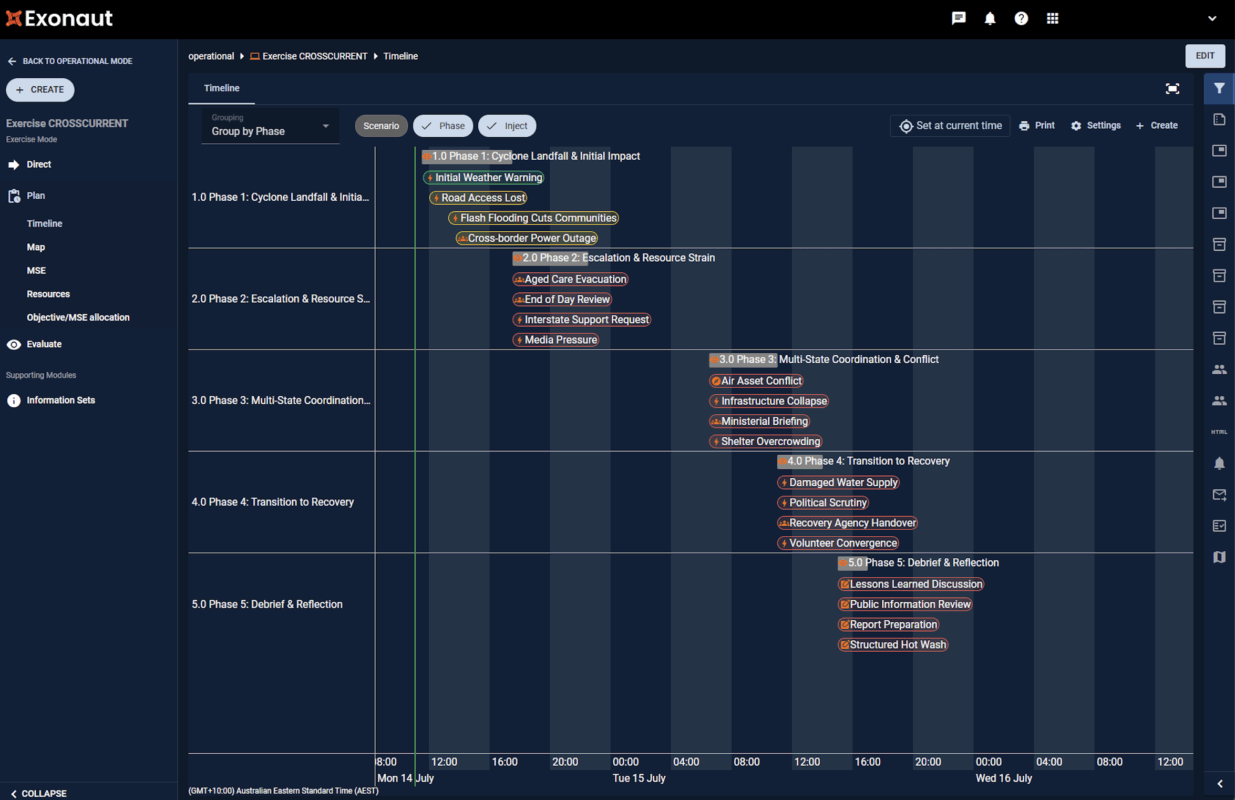The reality is that it can quickly become outdated. Processes shift, dependencies change, technology advances, and staff move on. What organizations need isn’t more of the same, but a way to keep BIAs up to date by empowering both experts and non-specialists to contribute, validate, and maintain them. This way resources are saved and your BIAs can make all the difference when a disruption occurs.
Becoming a winner in disruptions and crises
The BIA should enable you to answer two critical questions:
- What really matters to us as an organization?
- How long can we afford to be without it?
When BIAs are dynamic, up to date, easily visualized, and simple to collaborate on, they form the foundation of a confident response to disruption. They ensure you’re not trying to protect everything equally but are instead focusing on what matters most. This allows leaders to triage quickly and make actionable, fact-based decisions under pressure.
Research by Deborah Pretty (2020) highlighted a striking reality: organizations that invest early in incident and business continuity management strategies are far more likely to emerge as “winners” in a crisis. Fundamentally, this involves prioritizing the services that keep the business viable and ensuring they are maintained or quickly recovered when disruption strikes. Conversely, mishandling an incident can cause considerable damage. The gap between resilient and vulnerable organizations has widened sharply in the past 20 years, and this makes the need for effective BCM more urgent than ever.
How you respond is now judged, as investors, customers, and regulators get to see “behind the curtain” in a way that isn’t possible during business as usual. Poor handling of disruptions erodes credibility and trust, while decisive, well-prioritized responses build confidence.

Ready to take your BIA to the next level?
Continuity Manager by 4C Strategies is an AI powered solution with the BIA at the heart of its operations. It helps you deliver faster, smarter, and fully auditable BIAs, built for today’s resilience and reporting challenges.
The Struggle with Traditional BIAs
Resilience is a complex management problem. BIAs are powerful, but they won’t always deliver the expected value as traditional, static approaches often break down under pressure. Issues include:
- Resource intensity: Small teams are tasked with coordinating workshops and interviews, often introducing new and abstract concepts that are unfamiliar to colleagues. Without shared understanding, each session requires heavy explanation and persuasion.
- Lack of internal definitions: Core terms like “impact” or “criticality” mean different things to different teams. Without common definitions, prioritization becomes inconsistent and sometimes political.
- Limited engagement with the finished product: Even when a BIA is completed, colleagues often don’t know where to find it, or they see it as irrelevant to their role. When the data looks overly technical or abstract, they tune out.
- Keeping the BIA alive between review cycles: Static BIAs quickly lose relevance as processes and dependencies change. By the time the next review comes around, the outputs may already be outdated.
The outcome is predictable: BIAs that meet compliance requirements but don’t provide the best tools for decision-makers when disruption strikes. s.
Empowering Non-Specialists: The Untapped Opportunity
The knowledge that drives an effective BIA doesn’t only exist in the resilience team. It sits with service managers, operators, and frontline teams who understand dependencies, tolerances, and practical realities. What is important to note is that the quality of this data is far better than the output of multiple rounds of interpretation; a likely consequence when resilience professionals are solely responsible for analysing information. The challenge therefore becomes how to engage colleagues in this process without requiring that they become resilience specialists.
This is where technology can transform the process. Non-specialists can’t be expected to maintain complex spreadsheets with unclear terminology. They need structured, intuitive tools with guided workflows that ensure all necessary information is captured consistently, while avoiding the gaps and duplications that creep into manual processes.
Continuity Manager from 4C delivers exactly this. The user-friendly tool enables impact data to be collected and updated continuously, making powerful comparisons across services and functions possible and providing a far richer picture of organizational risk than a static document could ever achieve.
Dynamic visualization makes it possible to map dependencies and see the knock-on effects of disruption in real time. And where colleagues need extra support, AI-driven assistance can step in to guide decision-making, suggest tolerances, and even generate plans based on criticality.
By centralizing resources and processes, software also reduces errors and duplication, ensuring that teams are working from a single version of the truth. Just as importantly, it embeds the language and practice of resilience into day-to-day operations, allowing staff to contribute meaningfully without needing specialist knowledge. In this way, resilience teams move away from being bottlenecks and instead become facilitators, while the broader organization helps to maintain live, accurate data that can be trusted when disruption strikes.
Sustaining Engagement Beyond the Workshop
Even when workshops succeed, the risk is that BIAs fade into the background. Non-specialists may not revisit them until the next cycle, which is why design and process are critical. Accessibility is often the first barrier: if colleagues don’t know where to find the BIA, they won’t use it. Even when they do, if the information looks overly technical or unappealing, engagement quickly drops away.
Equally important is creating a clear line of sight between contributions and outcomes. Linking BIAs directly to continuity plans and risk assessments shows participants that their input drives real decisions, rather than disappearing into a report. Reinforcement also matters: revisiting dependency maps and impact tolerances throughout workshops helps people see why the exercise is valuable and keeps the conversation alive between review cycles.
By approaching engagement in this way, organizations can prevent BIAs from becoming static documents and instead embed them as part of continuous resilience practice.

Build the resilience of your organization from top to bottom
With over 25 years of experience around the globe, our consultants help organizations be better prepared and faster to respond to crises and disruptions.
Embedding a culture of resilience
A BIA that sits in a binder is compliance. A BIA that lives across the organization is resilience. When non-specialists understand their role, see how their inputs connect to others, and feel ownership of the outcomes, BIAs become embedded in the culture of resilience. They stop being “documents” and start being decision tools. And that’s when your BIA really delivers value.










